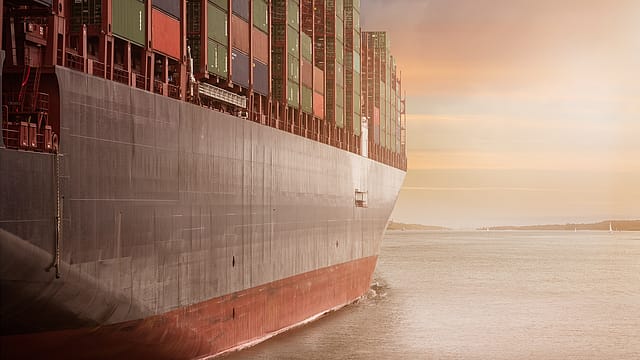Logistics must provide new customer-centric solutions
ADVERTISEMENT

The Coronavirus outbreak has impacted businesses and economies around the world, with the global logistics business being no exception. The resulting disruption in the short as well as the long-term will require a hard look at operating models, processes, protocol, and best practices, and the industry will need new strategies in the post-COVID-19 world.
Logistics players have, in recent weeks, responded to mitigating instant disruption in a situation not anticipated before as transportation links—sea and air—shut, and borders were sealed. Yet, in their crisis management may lie the initial building blocks for the solutions of the future.
The logistics ecosystem is an integrated one: infrastructure, technology, Big Data, manpower management and on-ground transport systems. All this will undergo a shift in the months and years ahead. In fact, as the business landscape changes, logistics players will have to respond proactively to a new and evolving situation.
Moreover, even as businesses are concerned about how to fulfil customers’ requirements, they realise the need to assuage people’s concerns about health and well-being, given the COVID-19 fatalities globally.
Air cargo transports approximately $6 trillion worth of cargo accounting for 35% of world trade by value, says International Air Transport Association (IATA). Other studies indicate that cargo worth $4 trillion is shipped via ocean freight. Both air and sea cargo systems work in tandem with on-ground infrastructure such as warehouses, transport companies, Container Freight Stations (CFS), etc., making logistics the bedrock of global supply chains.
January 2026
Netflix, which has been in India for a decade, has successfully struck a balance between high-class premium content and pricing that attracts a range of customers. Find out how the U.S. streaming giant evolved in India, plus an exclusive interview with CEO Ted Sarandos. Also read about the Best Investments for 2026, and how rising growth and easing inflation will come in handy for finance minister Nirmala Sitharaman as she prepares Budget 2026.
Challenges
Reports suggests the cargo capacity in China alone dropped 35% during end-February and early March 2020. Airfreight rates sky-rocketed as air cargo capacity fell with airlines cancelling and rescheduling flights. Companies are now looking at ocean freight as a viable option in the days and months ahead.
Businesses will be concerned about putting in place continuity plans to manage immediate challenges and chart a gameplan to follow as global trade revives. Once the Force Majeure period ends, customers will look to their logistics partners to offer cost-effective solutions for making businesses profitable.
What must logistics companies focus on?
Business continuity
Customers will need to make informed choices should they choose ocean freight. While it offers more capacity, special attention will need to be given to safety and packaging. Logistics partners will need to play an enabling role in helping them to meet timelines and ensure business continuity.
Digitisation
Digitisation is fast emerging as a ‘new normal’. As a major chunk of the global workforce moves towards working remotely, using digital tools and technology to stay connected and collaborate will be the key to success. Businesses will expect to continue operations and logistics service providers would need to step up and optimise their own processes and practices to maintain business momentum.
Capacity planning
As companies look to options beyond air freight, understanding the dynamics of container space management, for example, is important. Not all freight forwarders understand the specialised NVOCC business model. Moreover, adding to the equation is the need to handle trucking challenges, driver shortage, security protocols, etc. Businesses will need to look for alternate routes especially for time-sensitive shipments, understand what the competition is doing, and build sustainable plans.
Integrated WMS
The COVID-19 crisis has highlighted the need for flexible and tech-enabled solutions. Stock-keeping and warehouse management systems must be adaptable to meet such situations. Typically, handling emergency and medical supplies come under this category. However, even outside of such industry verticals, managing inventories in fast-moving goods, medical and pharma and perishables is a challenge. This will require trained manpower to handle cargo movement, space management, transport options, and security in an adaptable, flexible and scalable manner.
Cash-flows and financial planning
Business needs to look for ways to understand how to manage tight finance situations and prevent leakages going forward. Critical cost centers like warehousing, container space, transport links and even issues like storage and demurrage may well go out of control if not managed in an agile manner. Logistics players must provide critical inputs into the entire chain, including dynamic pricing and ensure a faster return to normalcy and continuity. By taking an end-to-end strategic approach in an integrated supply chain ecosystem, logistics players can help businesses manage costs.
Communications
No logistics and shipment plan, however fool-proof, can hope to succeed and meet stakeholders’ expectations if the communication across the entire supply chain is not managed seamlessly. Thus, identifying pain points is critical to ensure a smooth chain of delivery. With a tech-enabled and networked logistics partner, companies can identify constraints in their supply chains and devise customer-centric solutions.
A new world of business
The business landscape is now in uncharted waters. Going forward, new business models will arise even as logistics players come to grips with COVID-19’s full impact on consumer spending patterns.
Logistics companies must be ready to provide complete visibility across their customers’ supply chains. Digitising records will enable their customers to be more robust now in this time of crisis. Data security and sharing will be top priorities, and may see companies consider solutions like Blockchain.
Views are personal.
The author is joint managing director, Allcargo Logistics.
